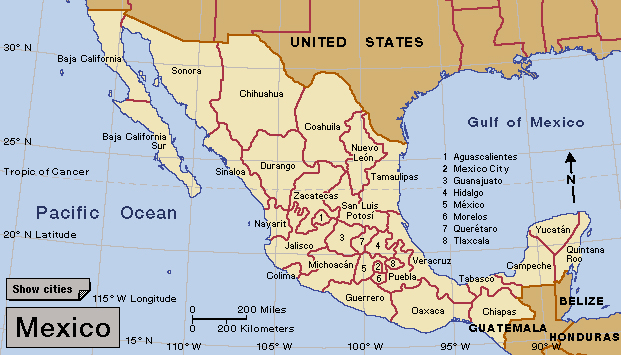México << MEH hee koh >> is a state in the south-central region of the country of Mexico. It has an area of 8,245 square miles (21,355 square kilometers). The 2020 census reported a population of 16,992,418. The Cordillera Neo-Volcanica, a volcanic mountain chain, extends across the southern part of the state. Two massive, snow-capped volcanoes—Popocatépetl and Ixtacihuatl—dominate the state’s southeastern border. México became one of the original states of the Mexican republic in 1824. Its capital is Toluca. México state wraps around the western, northern, and eastern borders of Mexico City. The metropolitan area of Mexico City extends into México state.

México state has a large, varied economy. Domestic and foreign corporations produce automobiles, chemicals, paper, pharmaceuticals, steel, and textiles there. Industry near México’s border with Mexico City has attracted many workers to the state. However, industry and urban growth have contributed to unhealthy levels of air pollution. Much of the state is rural. Farmers cultivate cereal grains and maguey, a plant used to make an alcoholic beverage called pulque.

Before the Spaniards conquered central Mexico in the early 1500’s, what is now México state was part of the Aztec Empire. Various Indigenous (native) groups lived in the area. During the colonial period, from the 1500’s to the 1800’s, the Spaniards took possession of much Indigenous land. They used it to raise cattle and crops to feed nearby Mexico City. Some Indigenous people and Mexicans of mixed ancestry joined the Mexican Revolution of 1910 to try to protect their remaining lands and resources. Today, land disputes between local small-scale farmers and large agricultural and timber companies and other commercial interests persist in the region.
See also Aztec; Mexican Revolution of 1910.
